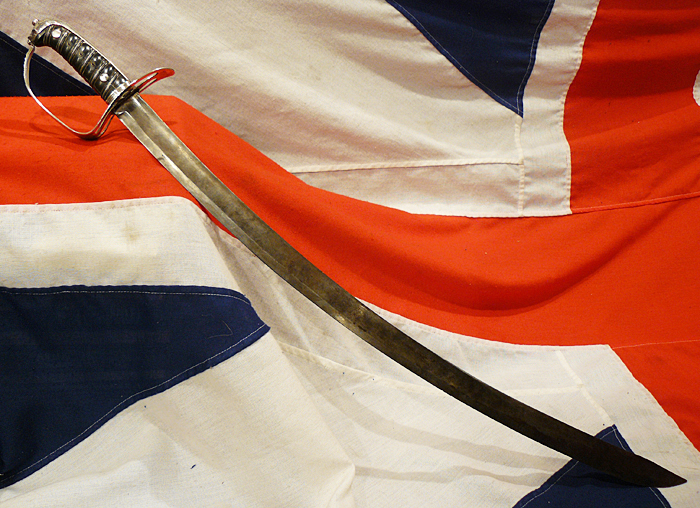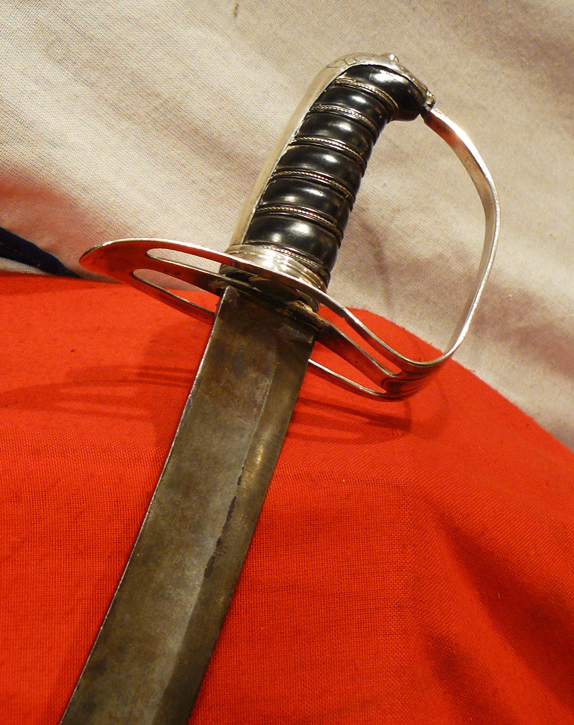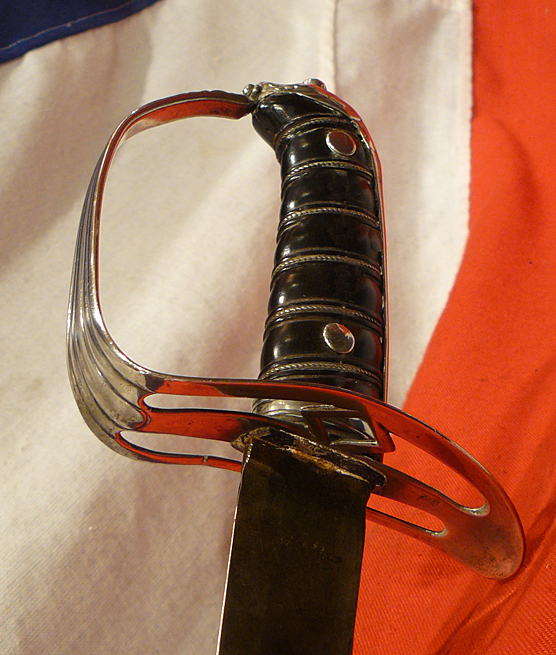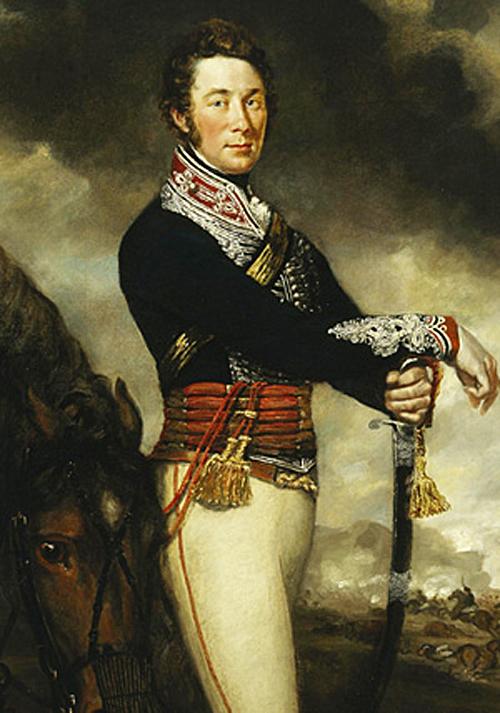A Stunning Solid Silver Napoleonic Cavalry Officer's Sabre 1796.-1803. It Is Exceptionally Rare To Ever See a Solid Silver Hilted Version of the Napoleonic Wars Period Light Dragoon Officer’s Sabre
It is possible there may not even be another similar example like it in the National Army Museum Collection, one of Englands finest military museums, located next to the world renown Chelsea Hospital, home to the most highly regarded military veterans in the world, the Chelsea Pensioners.
The sabre has a traditional version of the 1803 type Lion's head pommel, spiral turned ebony grip, with silver triple wire binding and two silver rivets. Slotted hilt, 1803 style, with fretted, open diamond form insert. Long, curved, traditional 1796 pattern light dragoon blade but with a rare clipped-back tip. In overall superb condition. A most rare example of a sword used by an officer serving under Wellington in the great light cavalry regiments, but as this sword bears a solid silver hilt this would suggest it was an officer of considerable status and rank, or, it was a presentation sword of highest quality. A deluxe bespoke sword, designed as a cross between the British 1796 Light Dragoon pattern sword and the British 1803 pattern sword with lion's head pommel and slotted hilt. Until just after the close of the war with Napoleon all British officers were allowed to wear a sword pattern of their choice, and this example is a most rare and beautiful example of such a hand made sword from the late 18th to earliest 19th century. Used by a British officer, as his finest top quality grade combat sword, during the Napoleonic Wars.
The mounted swordsmanship training of the British emphasised the cut, at the face for maiming or killing, or at the arms to disable. This left masses of mutilated or disabled troops; the French, in contrast, favoured the thrust, which gave cleaner kills. A cut with the 1796 LC sabre was, however, perfectly capable of killing outright, as was recorded by George Farmer of the 11th Regiment of Light Dragoons, who was involved in a skirmish on the Guadiana River in 1811, during the Peninsular War:
"Just then a French officer stooping over the body of one of his countrymen, who dropped the instant on his horse's neck, delivered a thrust at poor Harry Wilson's body; and delivered it effectually. I firmly believe that Wilson died on the instant yet, though he felt the sword in its progress, he, with characteristic self-command, kept his eye on the enemy in his front; and, raising himself in his stirrups, let fall upon the Frenchman's head such a blow, that brass and skull parted before it, and the man's head was cloven asunder to the chin. It was the most tremendous blow I ever beheld struck; and both he who gave, and his opponent who received it, dropped dead together. The brass helmet was afterwards examined by order of a French officer, who, as well as myself, was astonished at the exploit; and the cut was found to be as clean as if the sword had gone through a turnip, not so much as a dint being left on either side of it" The blade is remembered today as one of the best of its time and has been described as the finest cutting sword ever manufactured in quantity
Code: 21967





